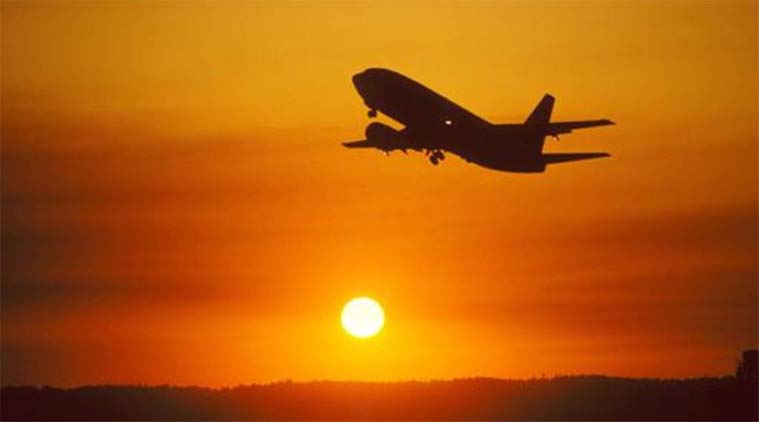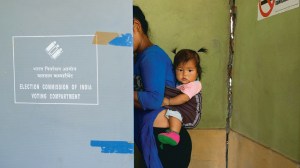- India
- International
Paperwork issues, security norms stand in way of Andaman’s seaplane plans
To study the feasibility and ways to implement seaplane operations in the country, a team of senior officials of the Civil Aviation Ministry, the DGCA and the Airports Authority of India had visited The Maldives in December.
 On Friday, the Civil Aviation Ministry awarded six water aerodromes under UDAN 3.0 that will be connected by seaplanes.
On Friday, the Civil Aviation Ministry awarded six water aerodromes under UDAN 3.0 that will be connected by seaplanes.
The government’s ambitious plans to connect Andaman and Nicobar Islands via water aerodromes have run into turbulent winds as the only operator to bid for the six water aerodromes in the union territory was not awarded the routes under UDAN due to “problems with paperwork”.
Even though there were four water aerodromes at Andaman and Nicobar up for bidding under the third edition of UDAN scheme — Havelock, Neil Island, Long Island and Hutbay — none of them were awarded during the announcement of the results the scheme on Friday. While a senior Civil Aviation Ministry official did not disclose the exact nature of paperwork issues with the sole bidder for these water aerodromes, it was learnt that the operator — Maritime Energy Heli Air Services Pvt Ltd — had been reached out to by the Ministry to seek the proper documentation, following which its bids would be reconsidered next month.
On Friday, the Civil Aviation Ministry awarded six water aerodromes under UDAN 3.0 that will be connected by seaplanes. These are Guwahati River Front and Umrangso Reservoir in Assam; Sabarmati River Front, Statue of Unity and Shatrunjay Dam in Gujarat; and Nagarjuna Sagar in Telangana.
Promising project, but no signs of infrastructure yet
Tourism experts have predicted that seaplane operations within Andaman and Nicobar islands could unlock the region’s tourist potential, given the lack of enough connectivity between the islands. Even though the debut of seaplanes and water aerodromes is one of the key features of UDAN 3.0, the success of the plan will depend on how soon the infrastructure is made ready. Currently, India does not have a single operational commercial water aerodrome and neither of the two operators who have won rights to operate seaplanes under UDAN have amphibious equipment in their fleets.
The routes in Telangana have been awarded to Turbo Aviation, while the routes in Gujarat and Assam have been bagged by SpiceJet.
When asked about the readiness of seaplane infrastructure in the country, Civil Aviation Secretary R N Choubey said that the water aerodromes will be built by the Airports Authority of India. “The work will start. We expect that within six to eight months, we will be able to make it functional because water aerodrome does not require a runway. We basically have to prepare a jetty and a terminal building and we expect that in six to eight months we’ll be able to get it done,” Choubey said, in reference with the infrastructure for water aerodromes awarded on Friday.
However, another senior government official informed that since the concept of water aerodromes was a novel one, the Civil Aviation Ministry has requested the Bureau of Civil Aviation Security to prepare security standards that are suited for water aerodromes. The timeline for the preparation of these standards was not disclosed. Notably, on the regulation front, the Directorate General of Civil Aviation (DGCA) has already issued the civil aviation requirements for seaplane operations.

To study the feasibility and ways to implement seaplane operations in the country, a team of senior officials of the Civil Aviation Ministry, the DGCA and the Airports Authority of India had visited The Maldives in December. Currently, Trans Maldivian Airways, a private airline based in Male, operates the world’s largest seaplane fleet comprising 50 aircraft.
Amphibious planes have the ability to take off and land from places that do not have landing strips and where no runway exists, thus reaching areas where there is no other mode of transport available. These smaller, fixed-wing aircraft can land on water bodies, gravel and grass.
Under the UDAN scheme, the government has listed two categories of seaplanes for receiving viability gap funding (VGF) — Category 1A for seaplanes with capacity less than nine seats and Category 1 for seaplanes with capacity of nine-twenty seats. The amount of VGF an operator would receive for seaplane operations will depend on which category their equipment falls into.
Under the UDAN scheme, the Centre aims to connect unserved and under-served airports. On the routes selected under the scheme, a fixed number of seats are sold at fares, for which a cap is decided by the government.
Airlines bid for routes with VGF they require to meet the costs and this funding is contributed by the Civil Aviation Ministry and respective State governments. Upon technical qualification, the airline with the lowest VGF bid is selected to operate on the route with a three-year exclusivity.
Apr 19: Latest News
- 01
- 02
- 03
- 04
- 05






































